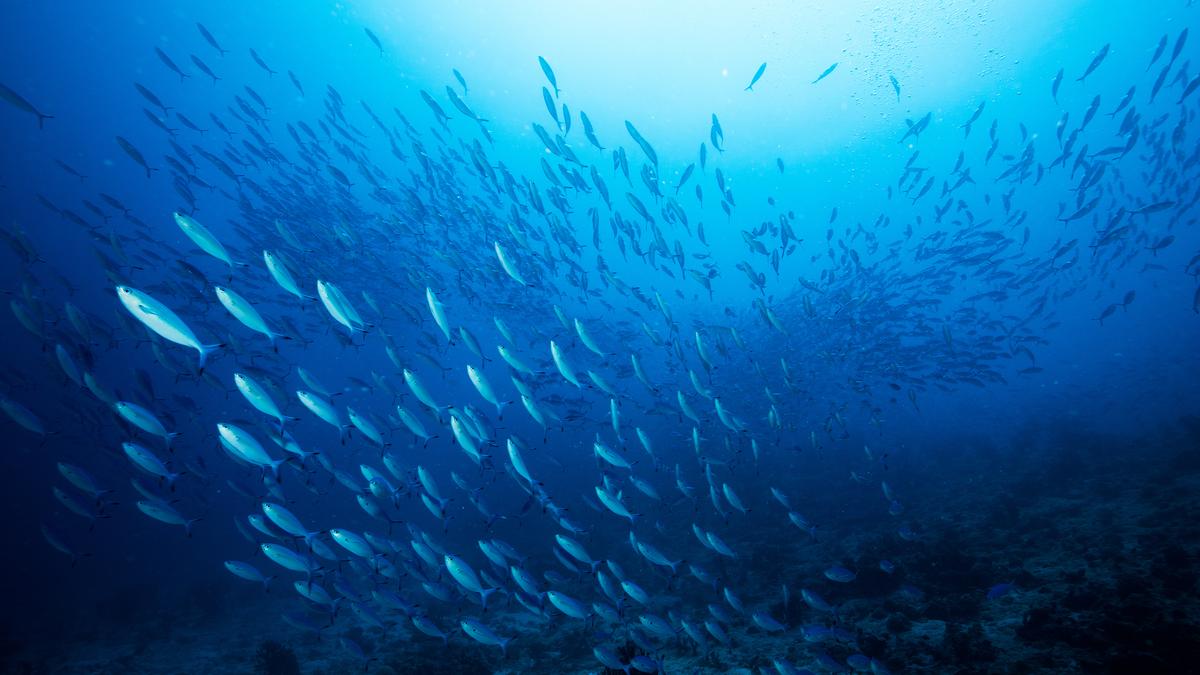
Aquaculture for feeding the world Premium
The Hindu
India's aquaculture industry, focusing on prawn production, has seen growth through innovative measures to meet market demands.
India has made impressive gains in adapting aquaculture for the nutritional demands of its population. It is the third largest producer overall, ranking second in the production of prawns. Andhra Pradesh is by far the largest producer, with other West Bengal, Tamil Nadu and Odisha making sizeable contributions along with Gujarat.
Dietary preferences too have changed — prawns, with their high protein and low fat content, are increasingly in demand both domestically and in the export market. Our aquaculture farms are supported by a network of industries that meet their many requirements, from aquafeed to measures for infection control. Farmers and local entrepreneurs constantly strive to come up with innovative measures that improve the quantity and quality of yield and meet climate change-induced environmental challenges.
The terms prawn and shrimp are often used interchangeably, although they are biologically distinct species. A prized product is the black tiger prawn, Penaeus monodon. This high-value marine species is grown wherever the conditions are right, and farmers strive to achieve the market-driven demand for 30 or less prawns per kilogram. Like many other aquaculture species, these prawns require a degree of salinity in their pond water: 10-25 grams of salts per litre of water is optimal (sea water has 35 grams of salts per litre).
In low-lying farms, such as in the Midnapore district of West Bengal, sea water is brought into aquaculture ponds during high tide. In coastal Andhra Pradesh, and in other places, the ground water is brackish and is pumped out and mixed with fresh water from rivers and canals.
A typical aquaculture pond is about 150 x 100 metres in size, with a depth of about two metres. After each production cycle of four-six months, the water is emptied, and the pond dried in preparation for the next harvest. An enterprising farmer, Siva Rama Rudraraju of Bapatla district in Andhra Pradesh has successfully advocated smaller ponds for better yields of prawns along with better control of pathogens. Smaller ponds help in containing economic losses when disease outbreaks occur, and bacterial pathogens such as Vibrio harveyi are a serious threat. In India, annual losses can amount to 25% of the expected yield. The white spot syndrome virus can be even more damaging in outbreak years.
Many laboratories now offer tests for identifying infectious agents, and an infected pond is quickly emptied. However, farmers fear the spread of the pathogens to nearby ponds. Crows are usually the culprits, carrying infected prawns and dropping them as they fly home. Plastic nets are often used to cover ponds. Sometimes, hunters are employed to cull the crow population.
Our farmers have adopted other methods for containing pathogens. Probiotics are added to the pond water. These are Bacillus bacteria that do not harm the prawn but grow faster than the pathogenic species, outcompeting them.





















 Run 3 Space | Play Space Running Game
Run 3 Space | Play Space Running Game Traffic Jam 3D | Online Racing Game
Traffic Jam 3D | Online Racing Game Duck Hunt | Play Old Classic Game
Duck Hunt | Play Old Classic Game











